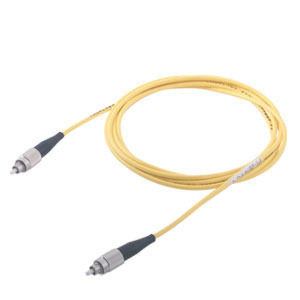Single Mode Fiber

A single mode fiber is a fiber optical cable that uses only one ray of light known as a “mode”. A single mode fiber can be used to transfer data in either direction at incredibly fast speeds and may stretch along hundreds or even thousands of kilometers. These factors allow single mode fibers to provide large office buildings, warehouses, and other areas with large numbers of computers to maintain fast speeds and reliable connections on all computers connected to the network.
How Single Mode Fiber Works
A mode of light refers to a ray of light that runs parallel inside an optical fiber, but has photons that vibrate perpendicular to the fiber, and can be used to describe the way a ray of light is dispersed in space. Although individual rays of light can have the same mode and be dispersed in the same way, they can hold different frequencies. This allows single mode fibers to carry data in the same way that multi-mode fibers do, but with less dispersion. By dispersing less light, a single mode fiber can carry large amounts of data and have a much higher bandwidth than multi-mode fibers.
Applications
Single mode fibers are used in many different environments, but particularly those where large numbers of computers are found or where reliable Internet access must be maintained at all times. For example, government agencies and electric companies may use single mode fibers to maintain their own computers as well as their vast networks of computer-controlled equipment.
Advantages
Single mode fibers are advantageous because they provide higher amounts of bandwidth than multi-mode fibers and much faster speeds than either coaxial cables or wireless connections. Single mode fibers can span thousands of kilometers with data rates up to 10 Gigabits/second or hundreds of kilometers with data rates up to 40 Gigabits/second.


Comments - One Response to “Single Mode Fiber”
Sorry but comments are closed at this time.